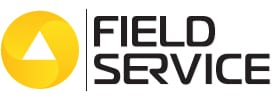What is the primary goal of field service?
As we are getting ready for the Field Service USA conference and preparing our presentations, sessions, and demos, I thought about that question.
It may sound banal, but over the years we have been talking about a variety of goals for field service organizations — from greater efficiency, better customer experience to higher revenue. Those are all great outcomes and in general, they apply to just about every service organization.
But what is the primary goal of field service?
 I’d argue that the primary goal of field service, it’s mission, is to deliver as little service as possible. People don’t like service. What they want is for the equipment to work. I don’t like taking my car to the shop. I only do it because I know that I have to — if I didn’t, it would stop running. That’s the crux of the matter. Without service, equipment will fail and nobody wants that. Failed equipment means added cost, loss of revenue, inability to deliver on expected outcomes, and sometimes, people might even get hurt. We deliver service to keep the equipment running.
I’d argue that the primary goal of field service, it’s mission, is to deliver as little service as possible. People don’t like service. What they want is for the equipment to work. I don’t like taking my car to the shop. I only do it because I know that I have to — if I didn’t, it would stop running. That’s the crux of the matter. Without service, equipment will fail and nobody wants that. Failed equipment means added cost, loss of revenue, inability to deliver on expected outcomes, and sometimes, people might even get hurt. We deliver service to keep the equipment running.
That’s the idea behind moving from reactive service (or break-fix model), to proactive service. But service is expensive and nobody wants to do it when it’s not necessary. The trick, of course, is to determine when is it necessary but before the equipment fails.
There have been multiple ways to deliver proactive service — from simple time-based plans to more sophisticated condition-based approaches. The idea is that every individual piece of equipment is being used differently under different conditions. My car in California experiences different conditions than the same type of car driven in Massachusetts. In addition, my driving style during my daily commute is different from another driver with the same type of car. In case of complex equipment, these differences add up quickly to a massive need for a customized service plan.
That’s where predictive service comes in. With all the data we can collect from sensors that have been installed on equipment ranging from pumps to jet engines, we have the data to analyze equipment health to predict the most effective and economical delivery of proactive service. This type of predictive service is the ultimate battleground. No, it won’t make service obsolete but it will optimize the deployment of service to address its primary mission: keeping the equipment running.
This is what we will be talking about at Field Service USA this year. Our CEO, Scott Berg will deliver a keynote titled “Proactive Maintenance Strategies: Reshaping Service as We Know It.” My colleague Patrice Eberline, an accomplished field service expert and book author, will lead a workshop on “Your Digital Journey: Benchmarking your Service Transformation.” And I will facilitate a roundtable discussion about “Transitioning from Reactive to Proactive Maintenance.” Come and see us at Field Service USA on April 17-20 in Palm Desert, CA!


Share this: